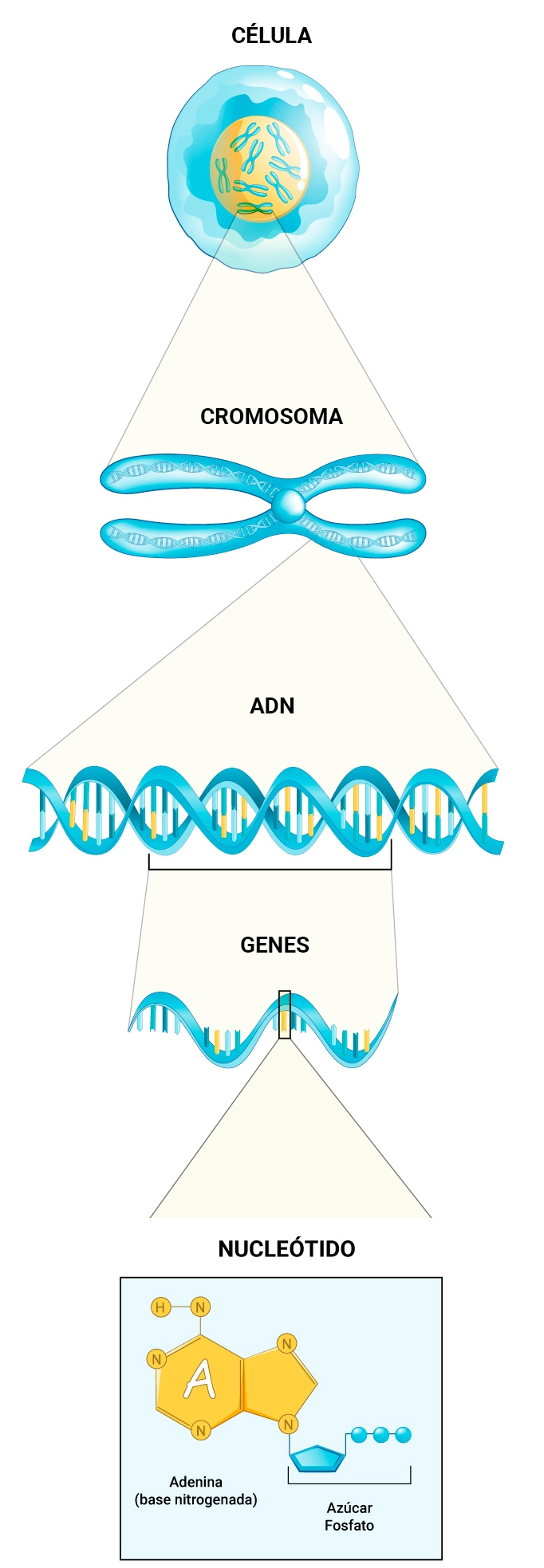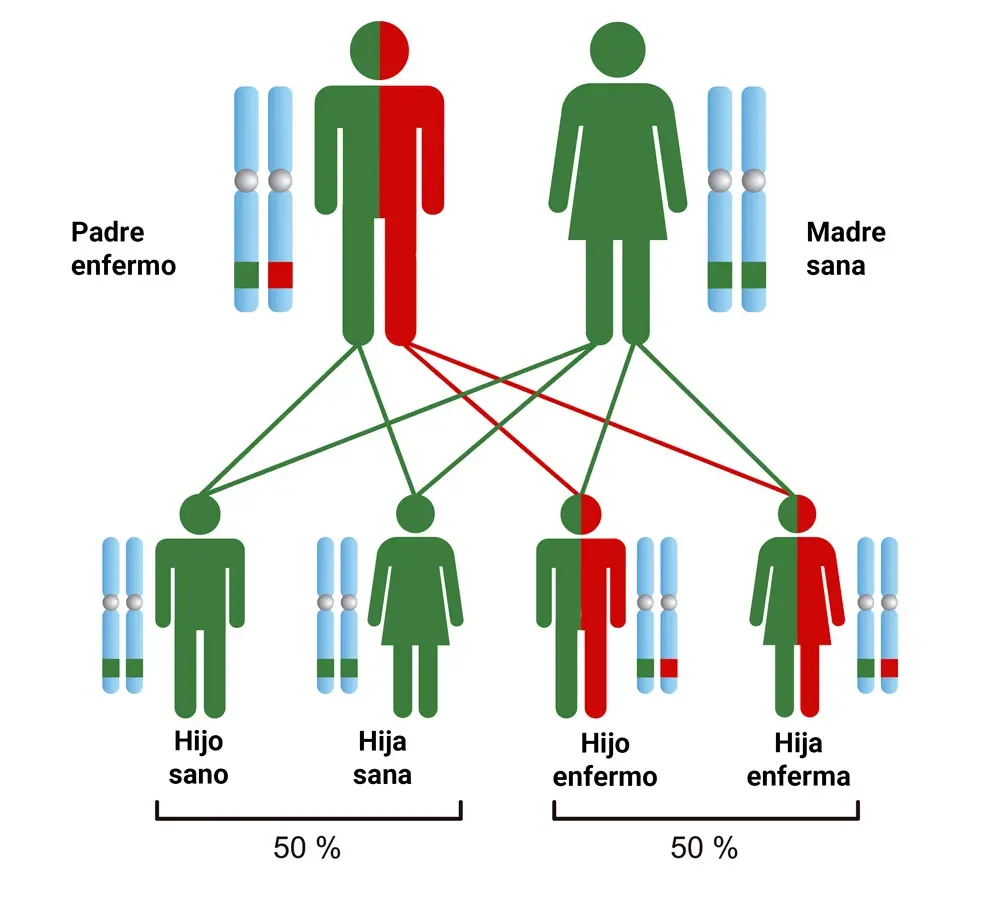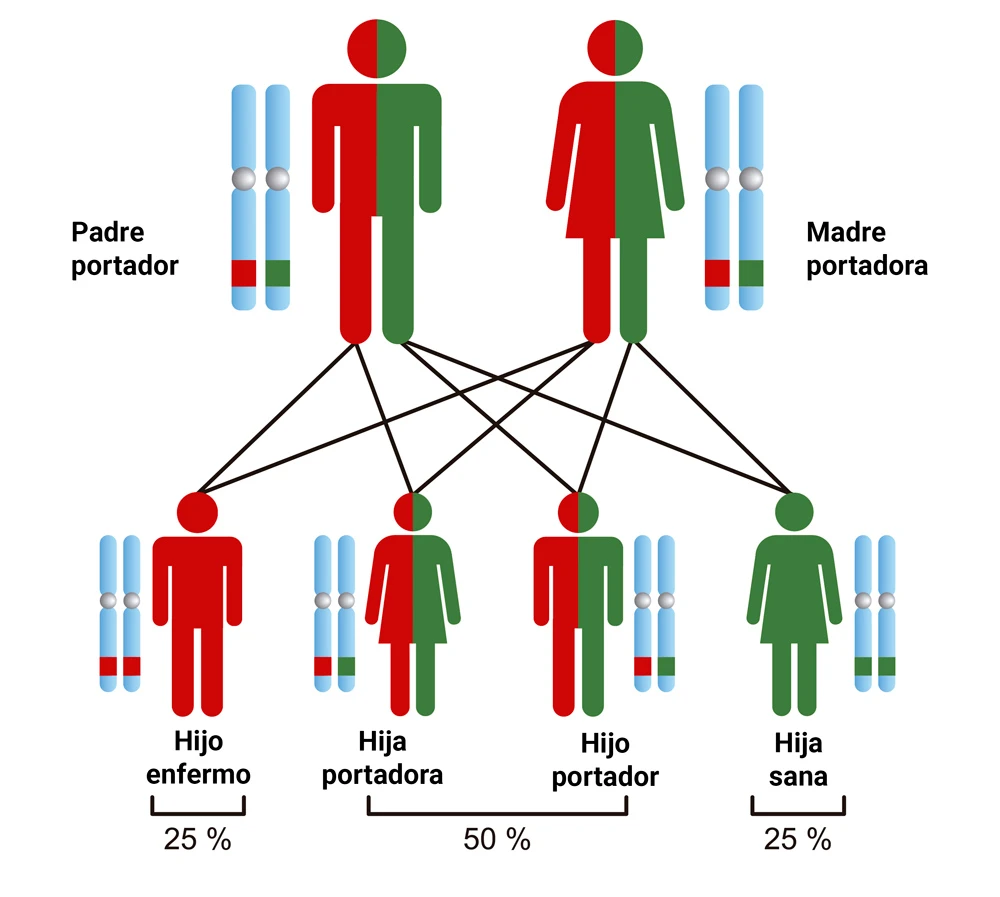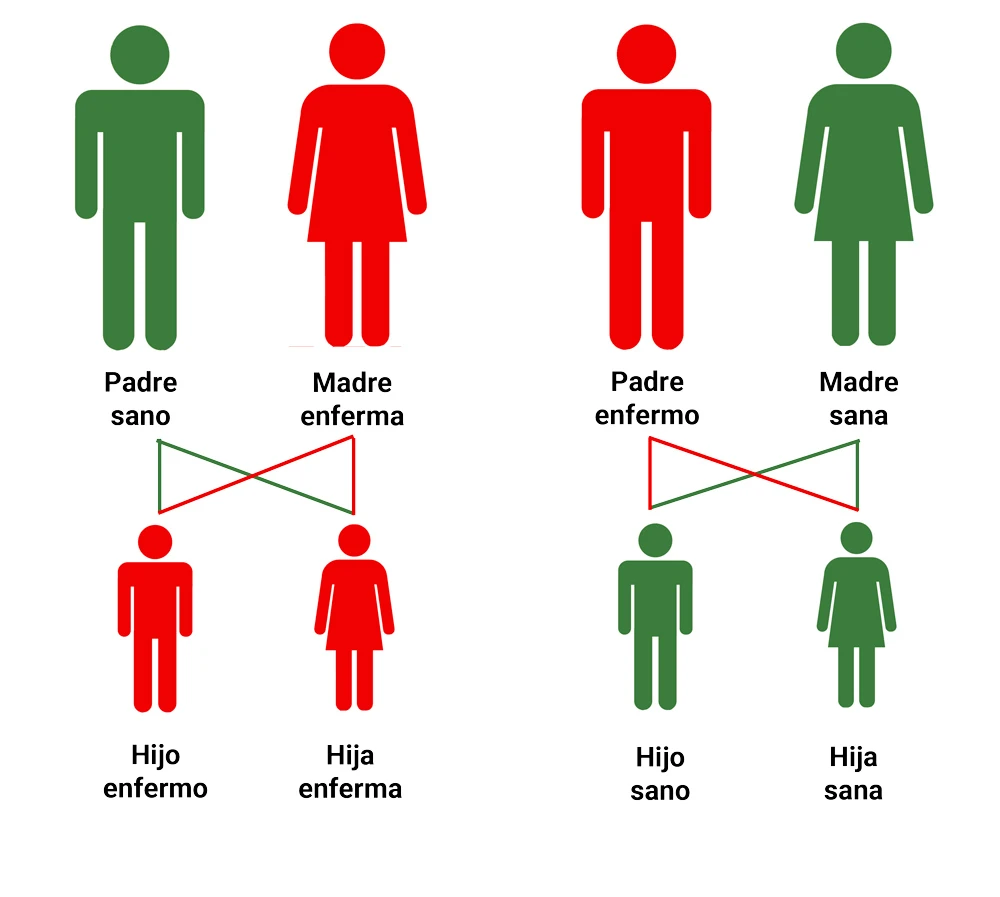Genetic information
The cell
The cell forms the fundamental basis of all living things, within each cell, DNA (deoxyribonucleic acid) plays a crucial role, as it houses the genetic instructions necessary to coordinate and regulate all cellular activities. This DNA sequence dictates how cells develop and behave, ensuring that every vital function is properly executed to sustain life.The Chromosomes
Chromosomes, the structures that contain our genetic material, are meticulously organized into the basic functional and physical units of genetic inheritance, the genes.
Each cell has 23 pairs of chromosomes, except for reproductive cells, which contain only half of them. One pair of chromosomes, the X and Y chromosomes, are sex chromosomes which, as the name implies, determine a person's sex. If a person has two X chromosomes, she is genetically female, while a person with one X and one Y chromosome is genetically male.
DNA and genes
DNA is a molecule that stores all the genetic information of an organism. It is composed of two long chains that intertwine to form a structure called a double helix. The chains are joined by smaller units called nucleotides, composed of a sugar, a phosphate and a nitrogenous base. There are four types of nitrogenous bases in DNA: adenine (A), guanine (G), thymine (T) and cytosine (C).
These bases bind in a specific way: adenine always with thymine, and guanine always with cytosine. This pairing ensures that genetic information is kept accurate and allows vital processes such as transcription (copying of DNA to RNA) and translation (production of proteins from RNA) to take place.
Each gene has a specific sequence of bases that code to form a particular protein.
Although all cells in the body have a complete copy of the DNA, not all cells use the same part of this genetic code at the same time. For example, kidney cells activate certain genes that are different from those activated by brain cells, because each cell type performs different functions and needs to produce different proteins. In addition, some genes can be turned on or off during the growth of the organism or in response to external factors such as infections or stressful situations.

Knowledge of the human genome has a profound impact on Biomedicine and Genetics, facilitating advances in diagnosis, treatment and prevention of diseases.
The human genome
Research conducted by the Human Genome Project estimates that the number of genes in humans ranges from 20,000 to 25,000. Each individual possesses two versions of each gene, inherited from each of his or her parents.
Although the vast majority of these genes are identical in all humans, there is a percentage of less than 1% that varies between individuals. These variations are known as alleles, which are slightly different versions of the same gene due to changes in DNA sequences. It is these differences that contribute to the unique characteristics of each person.
Genetic inheritance: transmission from parents to children
The fundamental laws of genetic inheritance are essential to understanding how diseases are transmitted from one generation to the next.
Autosomal dominant
The affected person usually has a parent with the disease. It tends to occur in all generations of the affected family.
E.g. Huntington's disease, polycystic kidney disease or Marfan syndrome.
Autosomal recessive
Both parents are carriers, even if they do not express the disease. It does not usually occur in all generations.
For example, cystic fibrosis, thalassemia or phenylketonuria.
Linked to sex
It is inheritance, autosomal or recessive, transmitted in genes located on the sex chromosomes (X or Y).
For example, hypophosphatemic rickets, Duchenne muscular dystrophy or hemophilia A.







